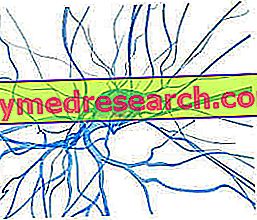By Dr. Simone Losi
Optimal training means the best ratio between training intensity and training duration, correct training frequency and use of the most suitable exercises based on individual physical and postural characteristics.

If the training is done seriously, after just 35-40 minutes the muscle fibers will be exhausted.
As for the ideal weekly frequency for training, the answer is not as simple as it seems: compared to the three canonical sessions, in fact, very often it is possible to obtain excellent results already with two weekly sessions. The muscle, in fact, "grows" during rest, so if we do not give the body time to recover both muscularly and mentally, we risk going into "overtraining", that is, in a phase of overtraining that can lead to poor (or even counterproductive) results.
To understand if it is better to train 2, 3 or 4 times a week, therefore, it is necessary to know perfectly the recovery abilities of the subject, a factor that depends on various factors, including: type of work performed, quality and quantity of the ingested food, psycho-emotional characteristics of the person, stress levels.
An individual who works ten hours a day, who eats little and is stressed due to family and / or relationship problems will need reduced training (in some cases, even once a week is enough), at least until some variants - such as nutrition and stress - have not improved: as regards the use of the most suitable exercises, it is obviously necessary to carefully evaluate the individual characteristics both from a musculoskeletal and postural point of view, in order to identify which they are the muscles that must be toned and which are stretched, without running into problems of body asymmetries or muscle pains.
Furthermore, there are no right exercises and wrong exercises, but there is the person who as such has a very specific muscular reality on which it is necessary to work specifically to obtain the best result with the least risk.
The question that will now arise spontaneously will be this: if I want to improve the physique in its entirety but I have limitations that advise against the execution of some exercises aimed at toning up the aforementioned muscle group, how can I develop it?
Well, in the first periods (about 2-3 months) we will work on muscle rebalancing and, after having achieved this, we will be able to start using exercises with isotonic machines and / or free weights also on those muscle groups where initially only one was done stretching work.
In short, the classic card Monday: chest-biceps, Wednesday: dorso-triceps, Friday: shoulders-legs-abdomen, still popular in many Italian gyms, cannot work for everyone.
Understanding individual needs also means stopping to reflect on what you really need to improve your physical condition, coming out of the concept that by now has faded that "more is better".



